Trebleshooting
You will find here guidelines to overcome issue when importing geometry into the Treble suite.
This page does not cover the direct feedback provided by the SketchUp plugin, which you can find here.
SketchUp plugin
The plugin does not start
Our plugin uses a UI that is stored remotely, so network issues might occur. Most common issues are detailed below.
Possible causes:
> Blank screen
This happens if a firewall is blocking the webhelper executable, and you will get such an error.
Fix: Ask your network administrator to allow connection to the domains sketchup.treble.tech and app.treble.tech for SketchUp WebHelper executable
sketchup_webhelper.exe in the folder C:\Program Files\SketchUp\Sketchup 20XX
(or do it yourself if you have the rights to change the outbound connections rules in Windows Defender Firewall).
> Failed to open TCP connection
This happens when a firewall is blocking the SketchUp from establishing outbound connections to https://sketchup.treble.tech, where the UI is located.
Fix: Ask your network administrator to allow connection to the domain sketchup.treble.tech and app.treble.tech for executables
SketchUp.exe and sketchup_webhelper.exe in the folder C:\Program Files\SketchUp\Sketchup 20XX
(or do it yourself if you have the rights to change the outbound connections rules in Windows Defender Firewall).
> Cannot fetch online plugin UI:SSL_connect
This is a somewhat unclear error, but it has been caused by the antivirus from zscaler. You can check if that is the case by disabling it before starting the plugin.
If this lets the plugin start, you should be able to fix it by allowing connections to
https://sketchup.treble.tech and https://app.treble.tech in your antivirus software.
A ghost window of Treble plugin won't disappear

In the screenshot above, the ghost window is highlighted in red. It cannot be closed and it mostly see-through, apart from the title bar.
Possible cause:
This happens if SketchUp is displayed on an additional monitor, and this monitor is disconnected.
Fix:
This is a SketchUp or Windows bug; a simple fix is to lock the screen and unlock it.
Incomplete part of a group
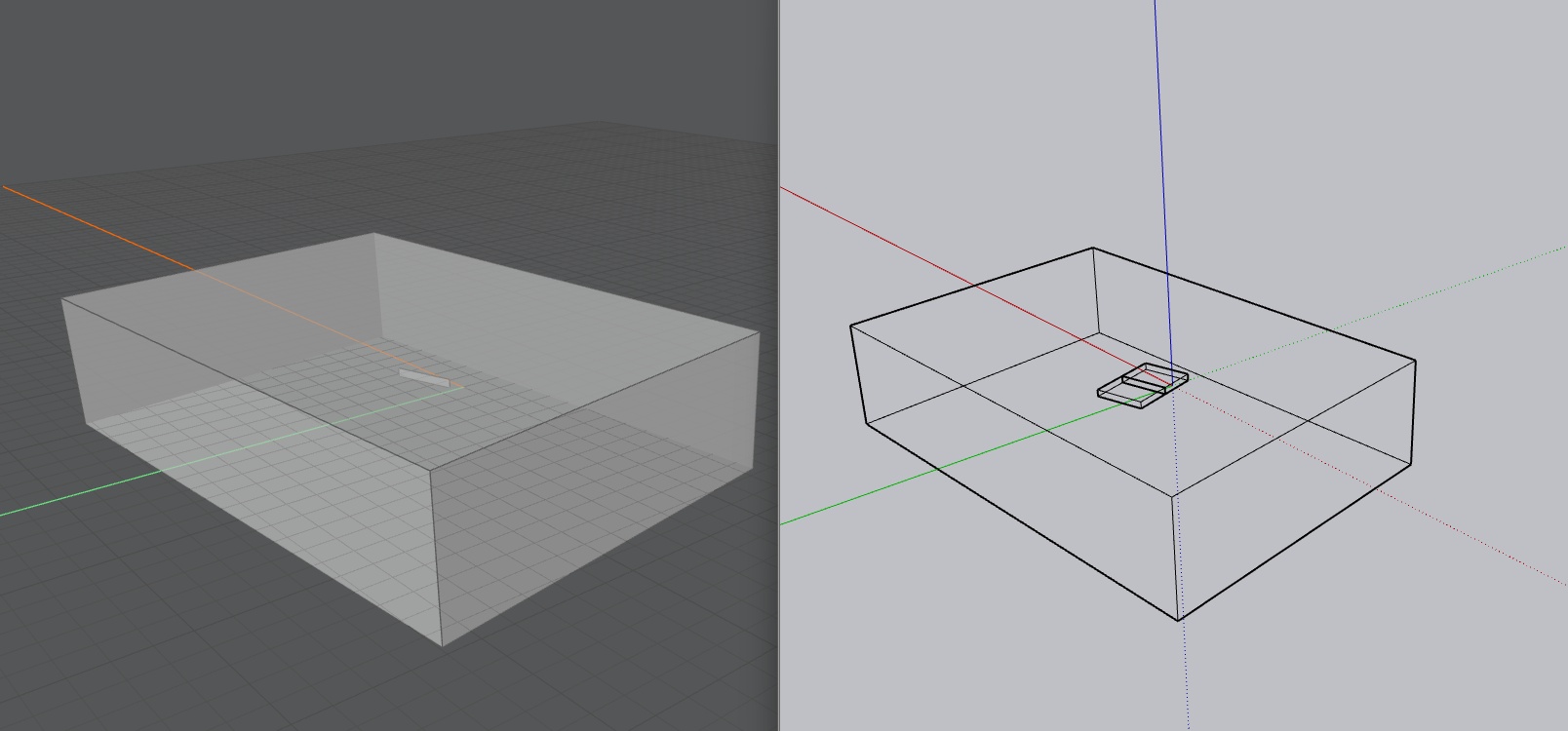
You can see in the screenshot that some of the group in SketchUp (on the right) is missing in Treble (on the left).
Possible causes:
> Faces in the group are overlapping
This is a known issue with groups that are composed of groups having overlapping faces and have a transformation applied to them. Fixing it is on the roadmap.
Fix: Edit the group and explode its inner groups that have overlapping faces. This way SketchUp will merge together the faces and prevent confusion.
Missing entities
You might sometime notice that components are missing from the model in the web app, yet not exclusion warning notified you of it.
The plugin simply ignores any object that is not included in the Treble > Geometry tag folder, and will not give you a warning if something resides outside of it: it is your choice not to include a layer for the simulation.
Possible causes:
> The element layer is not included
Fix: Double-check that the layer of your object is included.
> The element is a group (or component) and one of its entities is not included
You only have to tag groups (or components) themselves to include them, but they are not included if any of their entities is tagged with a tag that is not included in the Treble > Geometry folder.
Fix: Ensure that all the entities of the group/component are included OR untagged: you don't have to tag the group's entities to include it, only the group itself
Isolated edges warning but my model is watertight
You might check a model that is watertight but in SketchUp, Treble plug-in shows Geometry not watertight error or Boundary mismatch warning, alongside a Isolated edges warning.
Possible causes:
> One edge links two inner faces of a face

It is a known issue that an edge linking two inner faces of a face causes SketchUp not to see that the face is closed. A workaround is to come in soon, and in the meantime, a simple fix is to delete the edge as it is not necessary.
Fix: Select the edge like in the screenshot below, and delete it to solve the watertightness issue.
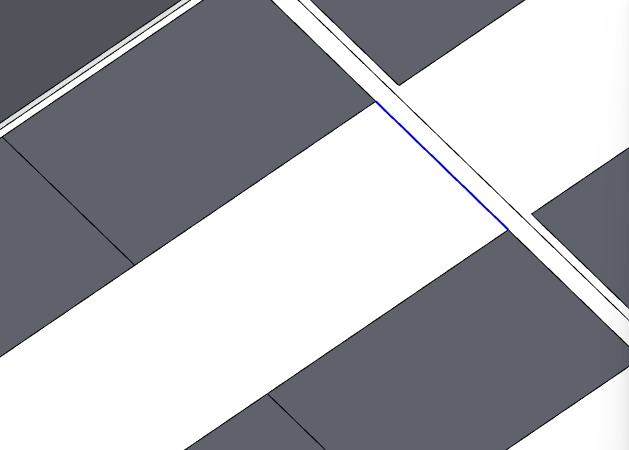
Undefined method 'position' when uploading a geometry (MacOS only)
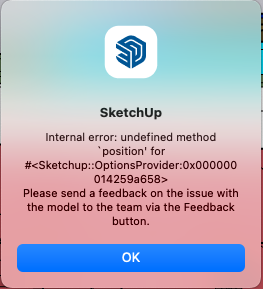
This error is a bug in SketchUp wherein the internal type of some objects is confused with an OptionsProvider object.
More information on SketchUp forum and on their issue reporting platform.
Why
This seems to happen reliably if you run a geometry check, close the model window (but not SketchUp) and then reopen the model.
Fix: Restarting SketchUp seems to clear up the internal confusion and uploading the model is possible again.
Web app
3dm file does not have any supported geometry
Why
Rhino file format (3dm) contains geometry representations that are not easily turned into meshes, and these geometry formats are currently not supported.
Fix:
If you come across this error, one workaround is to save the model as DXF with the following steps:
- open File > Save as
- when you are to choose the export options, click on Edit Schemes...
- in the AutoCAD Export Schemes window:
- select the export scheme 2007 Natural
- change the option Export surface as to Meshes
- click on SaveAs on the right, and save this new export setting as 2007 Meshes only, for instance
- close the window
- back to the Export option window, select the export scheme 2007 Meshes only and click on OK.
- in the next window, set the slider towards Fewer Polygons, and click on OK to initiate the export
Objects in Rhino are missing in the imported model
It sometimes happens that objects that are present in Rhino are missing after importing them in Treble, like in the example below wherein the table is missing.
View in Rhino with the table:
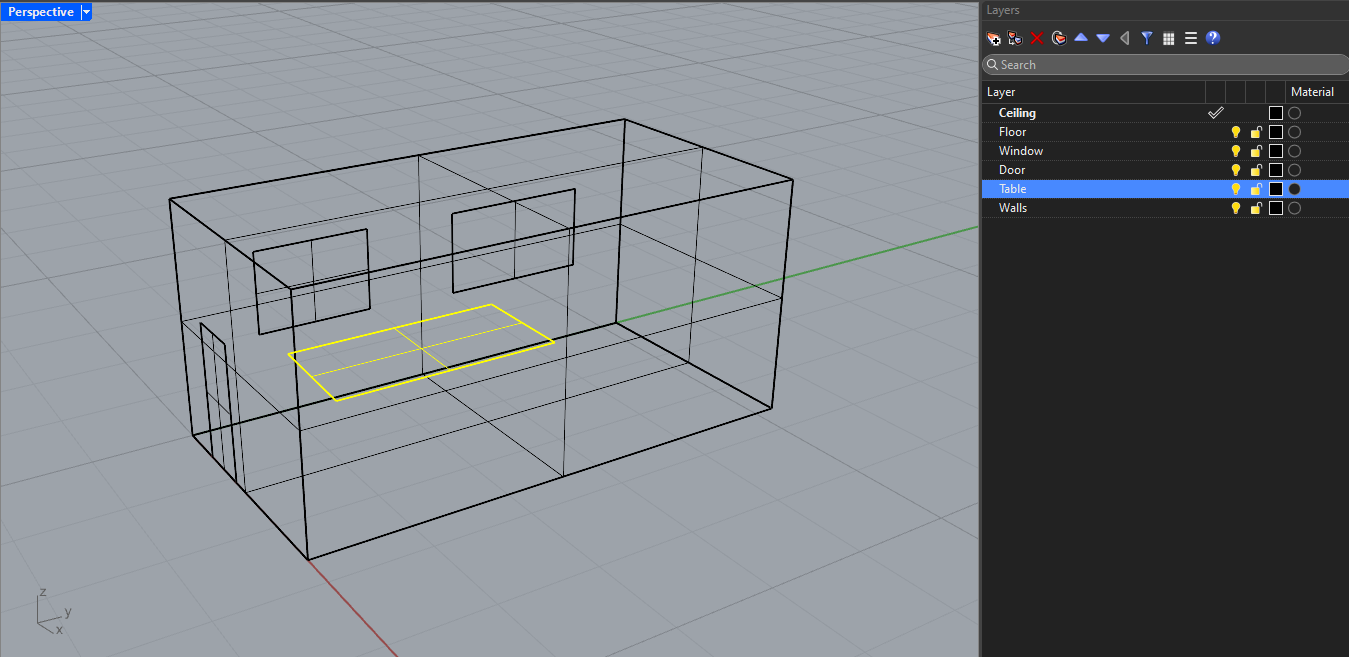
View after importing the file, without the table:
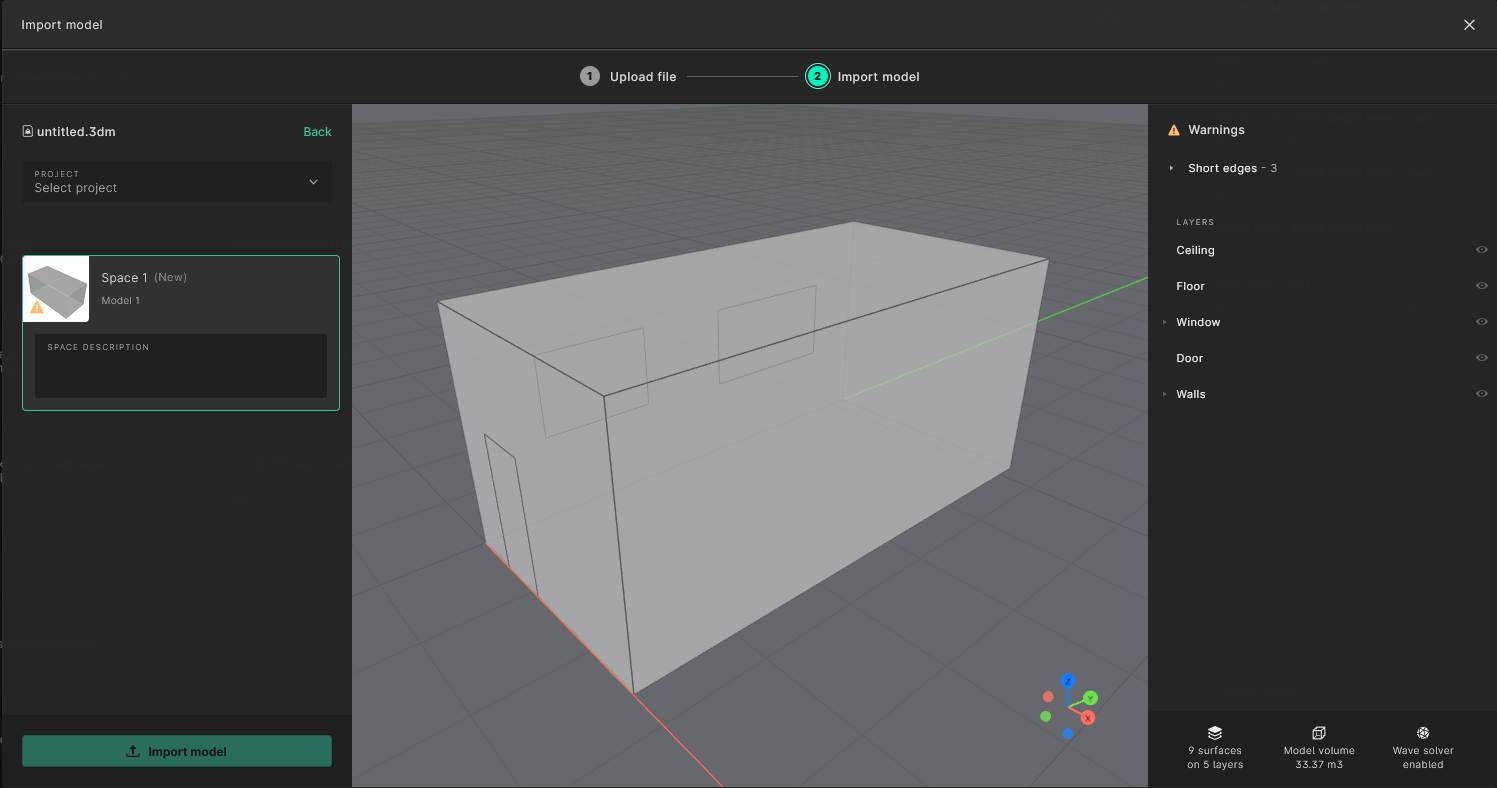
Why
Rhino files do not include the triangles of the objects, which Treble's solvers require. The triangles (also known as mesh) are only generated in some view modes.
Fix 1: Select the Ghosted view mode to generate the trianges
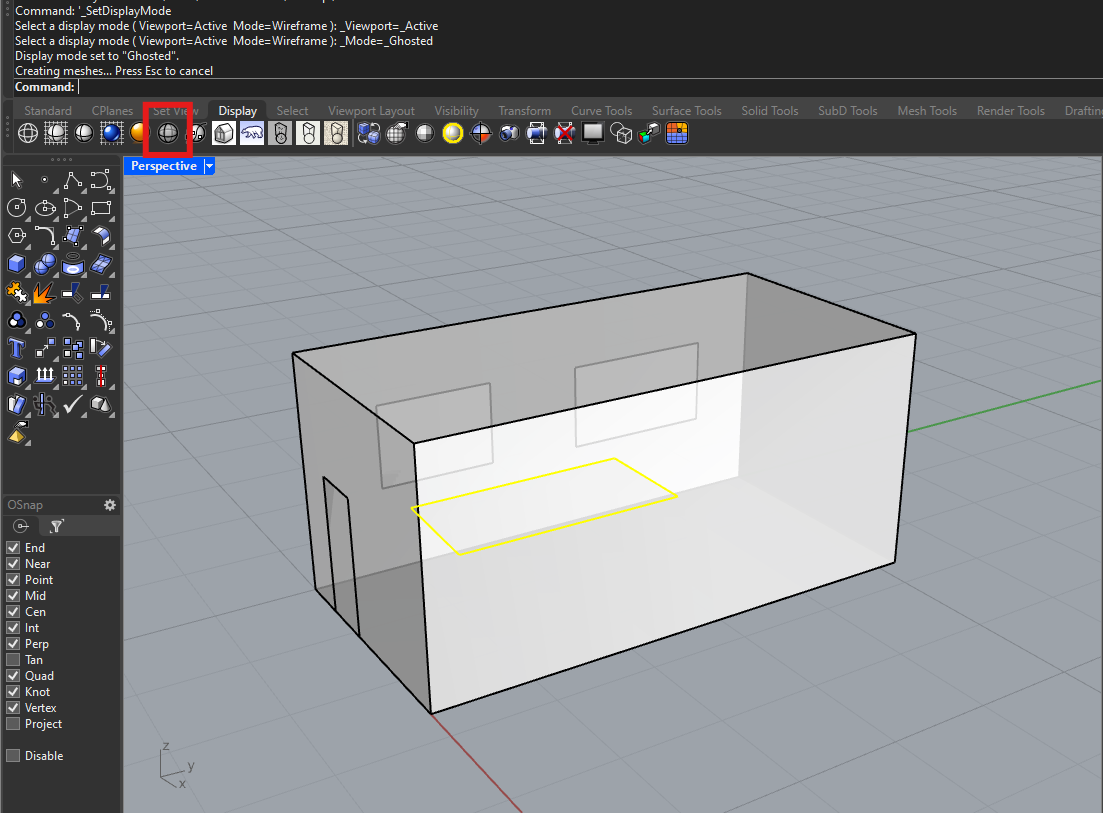
You can see in the last line of the command prompt that Rhino created the triangle (Creating meshes... Press Esc to cancel).
After that, save the file and upload again: the table is now included!
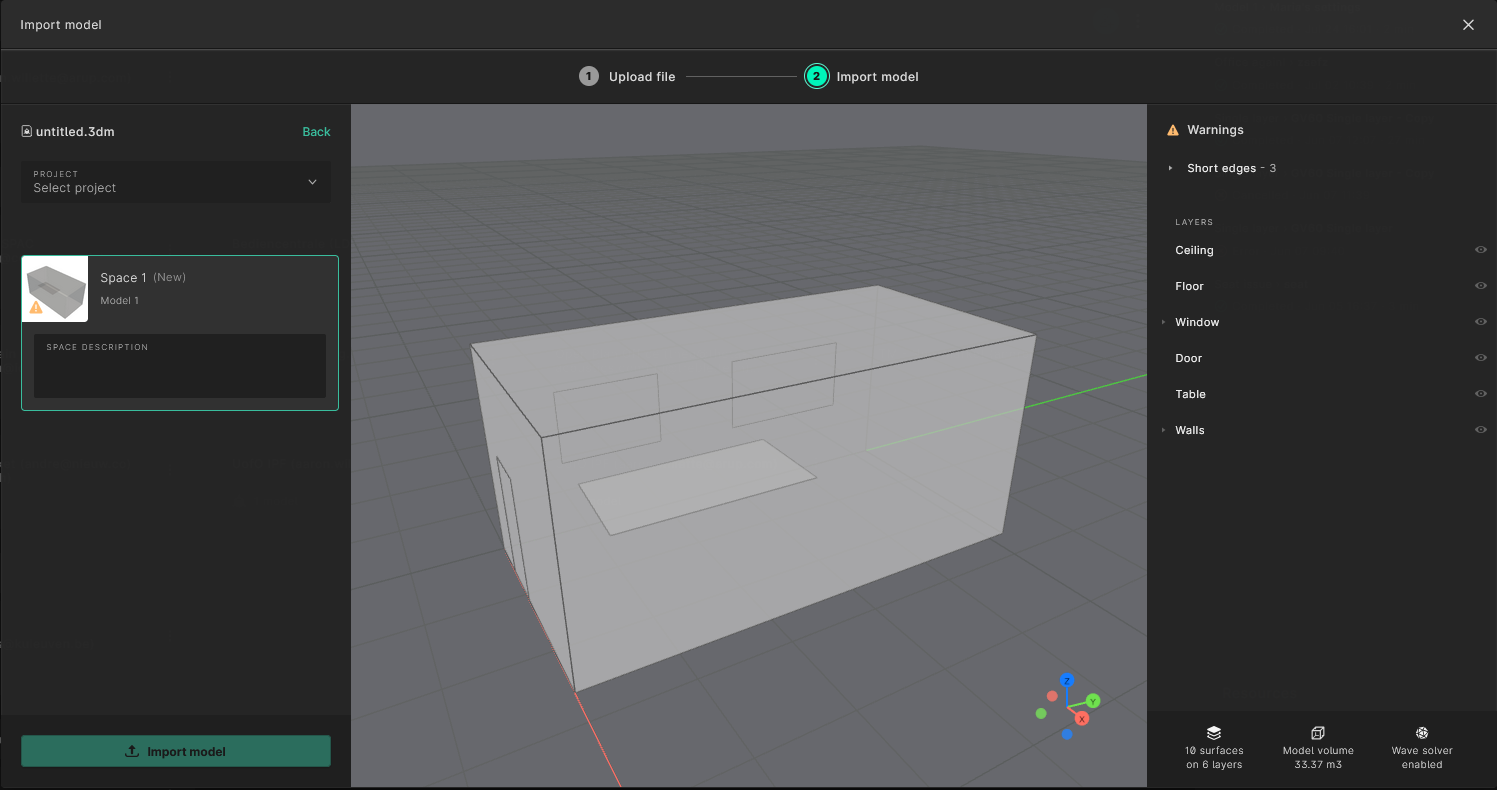
Receiver and sources wrongly valid or invalid (bug)
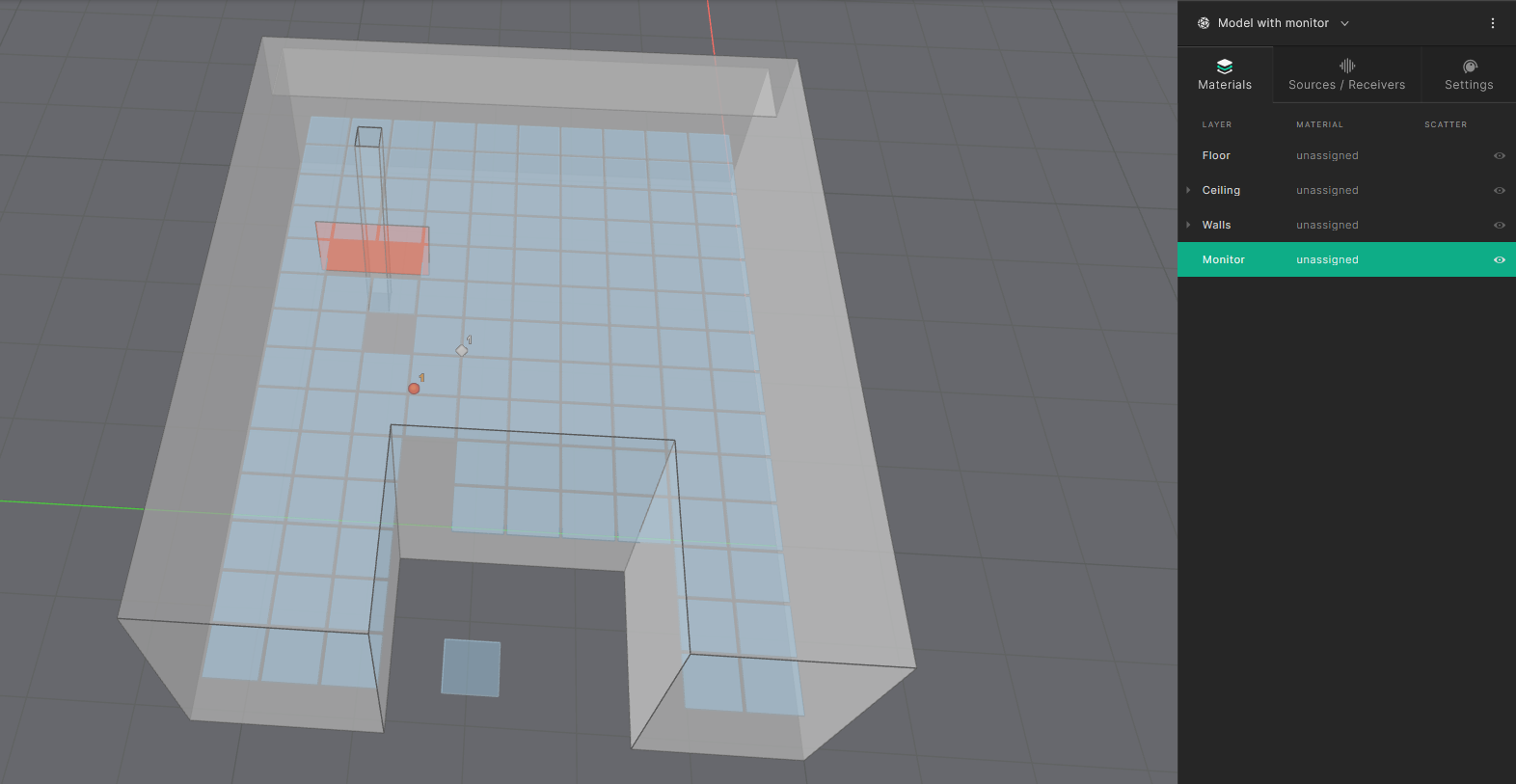
Sometimes receivers and sources might be red at places where they should be allowed. You can see in the screenshot that:
- the point receiver is in red - invalid
- some of the tiles of the surface receivers are incorrect: one is allowed at the bottom, clearly outside of the model, while others are not allowed while they are inside.
Why
This issue comes from some confusion in the labelling of the faces of the input model: some faces are wrongly seen as part of the outer shell of the model, which ends up confusing our algorithm checking whether the receivers are inside of the model.
This is a known issue that has been partially fixed and we are working on getting it fixed in all scenarios.
Workaround:
This is linked to the external walls, and one way to fix it is to follow the line of the 'flipped' receiver tiles and see where it touches something linked to an external wall.
In that case, all the area shown in red has the Monitor tag, and this is what causes the current internal confusion. You can change the tag of the part of the monitor that is on the pillar to something like Monitor wall, which will help the analysis to go through, and re-upload your model again:
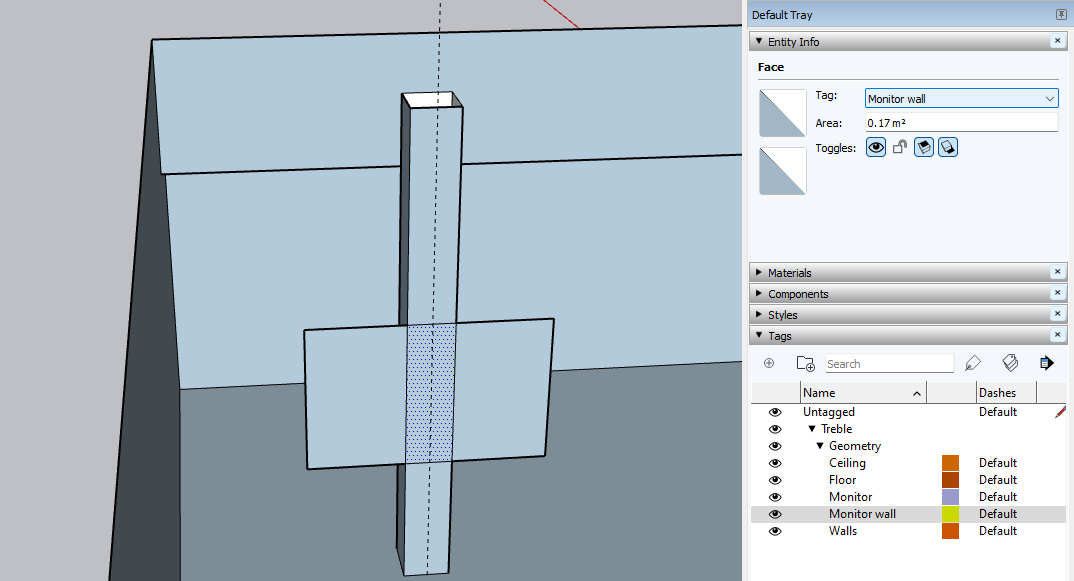
In the web app, you can obviously assign the same material to the tag Monitor and Monitor wall, there is no difference. You can see below that after changing the tag, the analysis is working fine and the surface receivers behave as expected.

Faces in the imported geometry are distorted
In some cases, the imported model can have some approximations that can be a bit problematic.
| Model in SketchUp | Imported model |
|---|---|
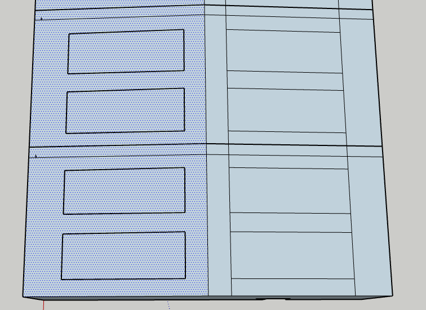 | 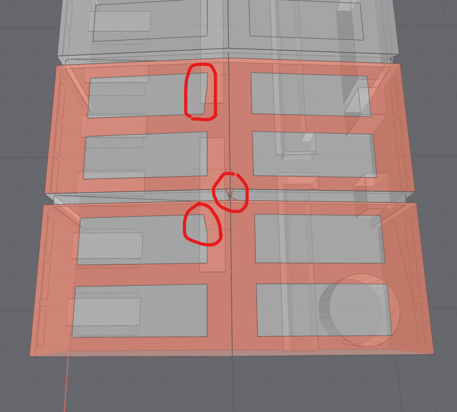 |
In the example above, the overlapping faces are not merged with the large, selected face in SketchUp (left image) and causes the import to introduce distortion in the circled region (right image).
Why
Most often, such an issue is linked to overlapping faces that are causing our importing algorithm to approximate things in an unprecise manner.
We recognise this limitation and are actively refining the simplification process, regularly publishing updates.
In the meantime, some workarounds exist and can be applied in SketchUp to prevent the distortion from happening (see below):
Fix 1:
In SketchUp, right-click on the bigger face and choose Intersect face > With model. SketchUp can, in some cases, detect the overlap and imprint the small face into the bigger face.
Note that this does not work if SketchUp cannot detect the overlapping.
Fix 2:
You can draw the smaller face directly onto the bigger face and delete overlapping one that cannot be intersected with the model.
In the example below, the panels (small faces) are now part of the large face (the ceiling) and no overlapping remains in the SketchUp model. The import, on the right, is now correct.
| Model fixed in SketchUp | Imported model |
|---|---|
 | 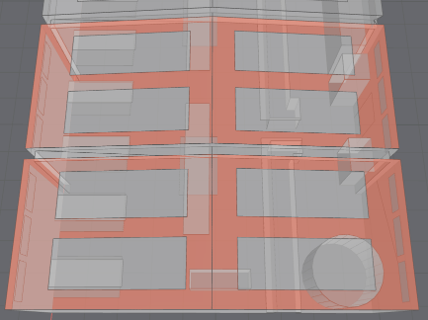 |